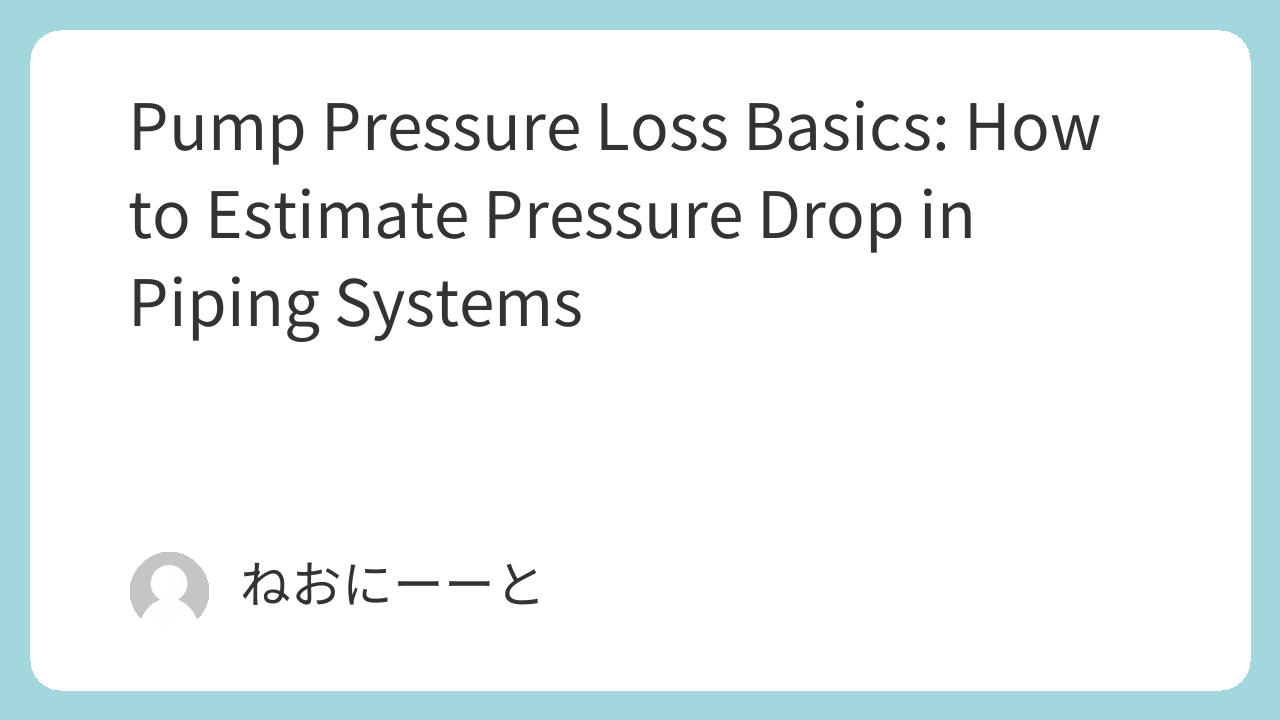If you’re new to working with pumps and piping, one of the first things you’ll hear about is pressure loss—also called pressure drop. This refers to how much pressure is lost as fluid flows through pipes and fittings.
Understanding pressure loss is essential when choosing or sizing a pump. If you don’t account for it, the pump might not perform as expected—or worse, it might not work at all.
In this article, we’ll explain the basic idea of pressure loss, what causes it, and how to roughly estimate it for simple piping systems. No advanced math or formulas needed—just the key ideas to get started.
💡 What Is Pressure Loss?
When fluid flows through a pipe, it loses pressure along the way. This happens due to:
- Friction between the fluid and the pipe wall
- Fittings and valves (which add resistance)
- Elevation changes (lifting the fluid higher requires more energy)
The total pressure loss is the sum of all these effects. This loss must be added to the pump’s required discharge pressure.
🌀 Why Does It Matter for Pumps?
Pumps don’t just move liquid—they move liquid with enough pressure to overcome:
- The height difference (called static head)
- The pressure needed at the destination (e.g., a tank)
- The pressure loss in the piping
If you forget to include pressure loss in your calculation, the pump might not reach the flow rate you expect—or may even fail to deliver any flow.
📐 What Affects Pressure Loss?
| Factor | How It Affects Loss |
|---|---|
| Pipe length | Longer = more friction |
| Pipe diameter | Smaller = higher loss |
| Flow rate | Faster = more loss |
| Fluid viscosity | Thicker = higher resistance |
| Fittings/valves | Each adds extra loss |
| Elevation | Lifting = adds to pump pressure |
📊 A Simple Way to Estimate
For basic estimates, engineers often use:
- Friction loss charts for straight pipes
- K-values for fittings (valves, bends, etc.)
- Formulas like Darcy-Weisbach or Hazen-Williams for more accurate results (optional for beginners)
But in early design, a rule of thumb is often used:
Pressure loss = 1 to 3 meters per 100 meters of piping (depends on fluid and layout)
This helps you quickly check if your pump selection makes sense.
⚠️ Be Careful: Static Head vs. Pressure Loss
It’s common for beginners to confuse static head (just the height difference) and pressure loss (from friction). Both must be considered separately in pump sizing.
✅ Summary
- Pressure loss (pressure drop) is the resistance a fluid faces as it flows through pipes, fittings, and valves.
- It’s caused by friction, flow rate, pipe size, and elevation changes.
- You must include pressure loss when sizing a pump, along with static head.
- Simple estimates or charts can help you get a rough idea during early design.
Understanding pressure loss is a key step in selecting the right pump for your system—and avoiding problems later on.

Comments